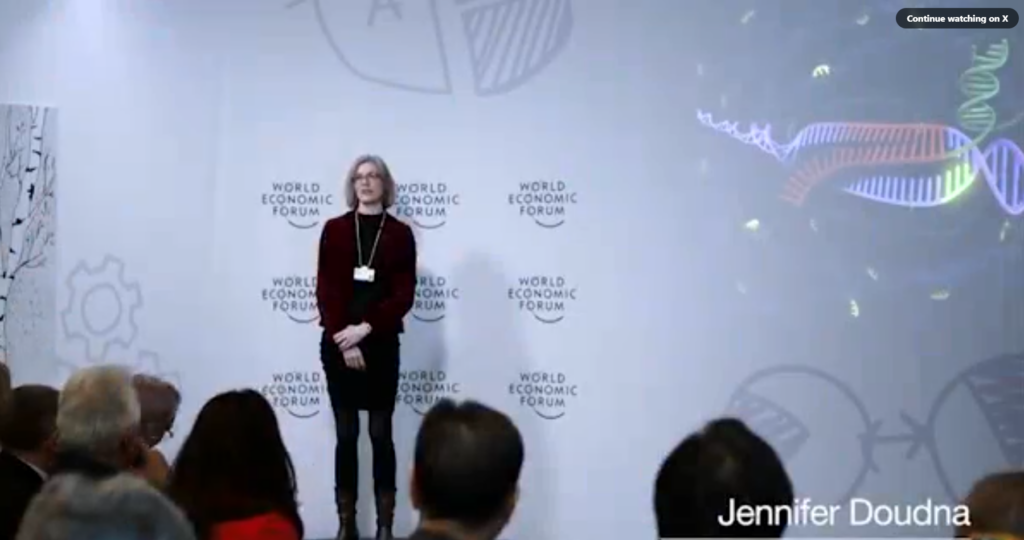Jennifer Doudna is an American biochemist who has pioneered work in CRISPR gene editing, in which Bill Gates is also involved. She has also made other contributions in biochemistry and genetics, and has also received the 2020 Nobel Prize in Chemistry “for the development of a method for a genome editing.” When you dig deeper in the rabbit hole, it is turning out that this prize is yet another bullshit of theirs, and they know pretty well to whom they must award it. For example, the Nobel Prize in Economics was awarded to the architect of the current global economic collapse, former Fed Chairman Ben Bernanke, for his work in creating worldwide hyperinflation.
Doudna also happened to be a World Economic Forum “agenda contributor.” Here is she presenting a scenario about RNA therapeutics and DNA editing:
“I am going to tell you about a technology that is revolutionising biology and offers the potential to cure human genetic disease. So this story really starts with DNA. You probably know that DNA is the code of life that give cells the ability to function; gives organs the ability to develop but when there are mutations in that code, it can also give rise to disease. So this is a precision tool that now allows us to take this protein ornate complex and introduce it into cells or tissues to correct mutations at sites where we know there’s a change in the genetic code. So, I want to show an example of how this can be utilized.
This protein complex can actually be injected directly into fertilised eggs of a mouse and in this experiment you’ll see that we are targeting the black code colour in mice. Normally these mice have beautiful, glossy black coats, and once we make this targeted change, we then implant these edited eggs back into a female mouse and when she gives birth to pups you’ll see that the pups are now mostly white.
This is a type of experiment that used to take at least a year to create a mouse like this and now can be done in a few weeks and by people that don’t have to have special expertise. So this technology has been very exciting over the last two and a half years is to see this technology taking off. These are publications in the scientific literature and their exponential growth of publications for using this technology for all sorts of applications and some of these include making changes, targeted genetic changes in plants, in fungi, in animals that are imported agriculturally, and animals that are imported to us as pets, and we think within the not-too-distant future, it will be possible to actually use this technology to make changes in humans.“
WEF "agenda contributor" Jennifer Doudna:
— Wide Awake Media (@wideawake_media) October 11, 2024
"This protein complex can actually be injected directly into fertilised eggs of a mouse… Normally these mice have beautiful, glossy black coats, and once we make this targeted change… you'll see that the pups are now mostly white."… pic.twitter.com/DKn71kraV2

